Learn a variety of strums and rhythmic patterns in wide range of musical styles. One of the first skills a ukulele player learns is the art and craft of strumming, playing rhythm. This refers to an accompaniment technique suitable for the singer, singer - songwriter or someone who plays a support role for another instrument.
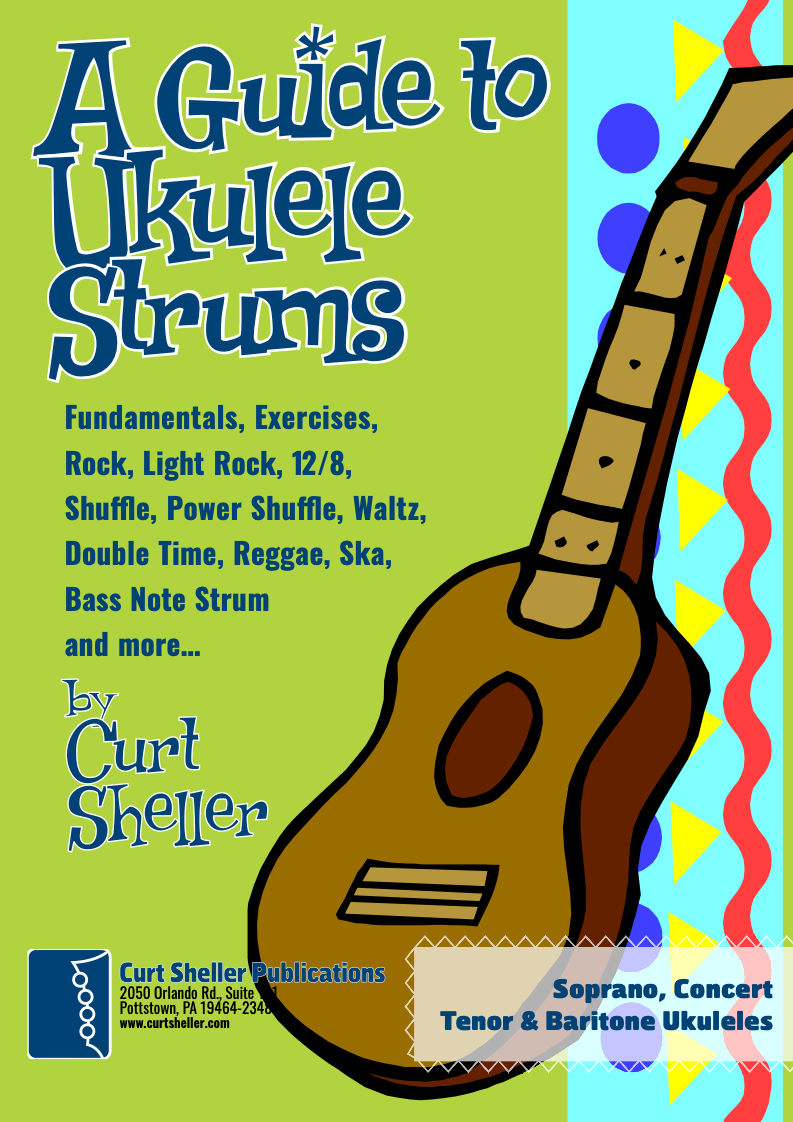
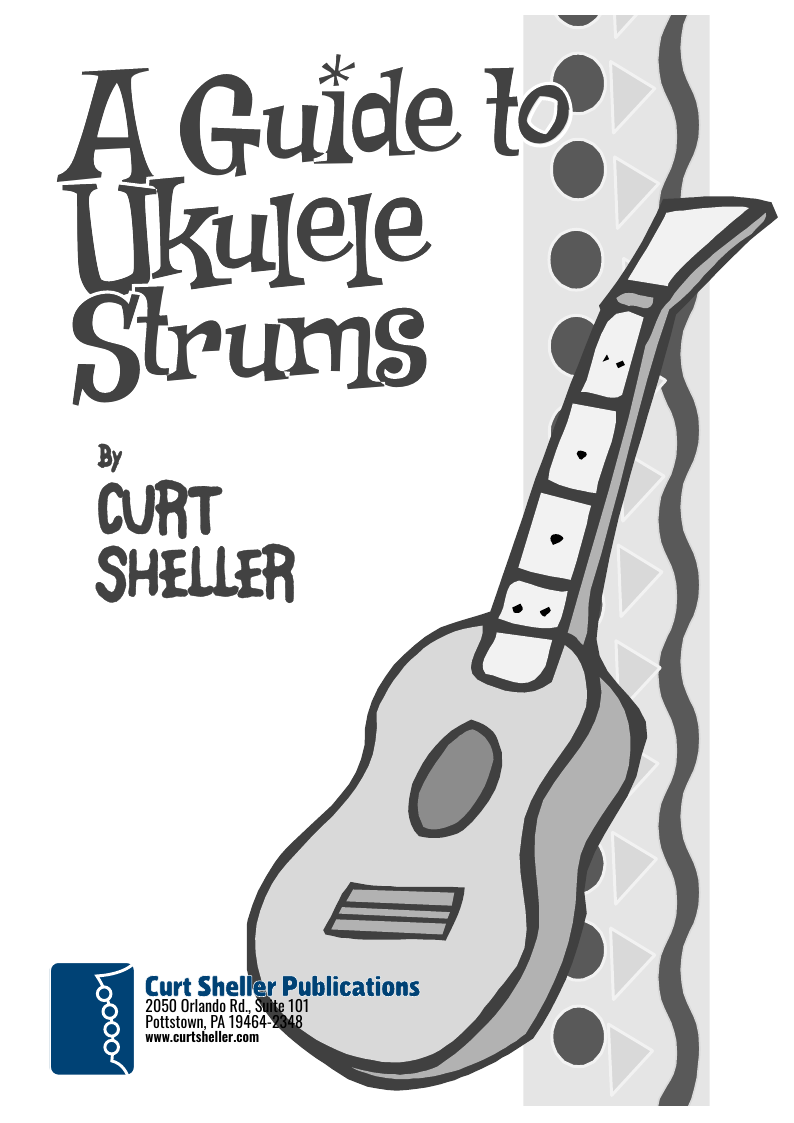
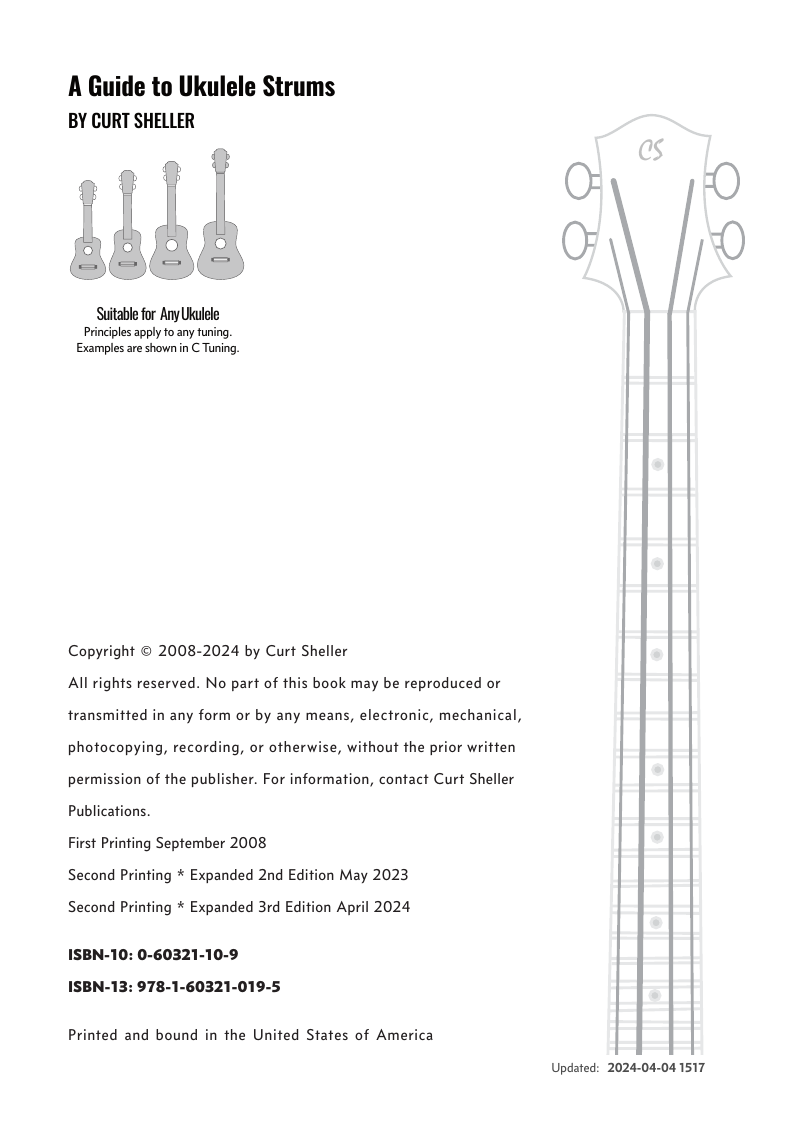
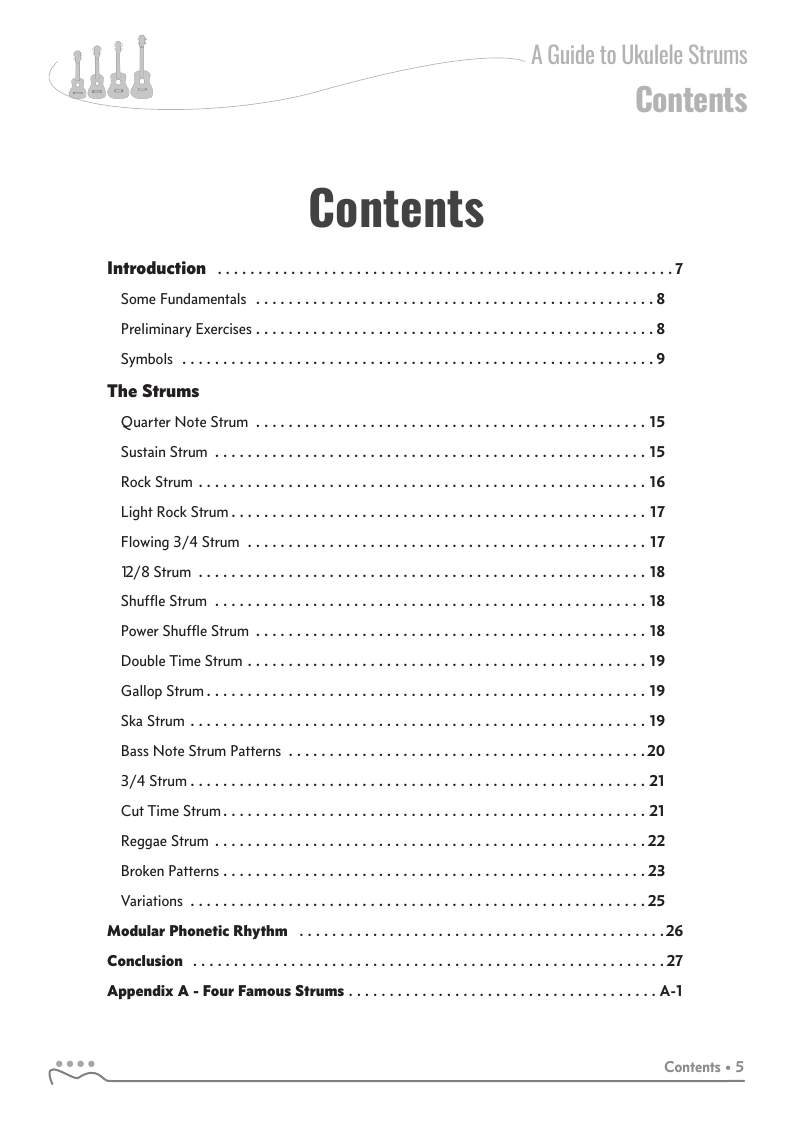
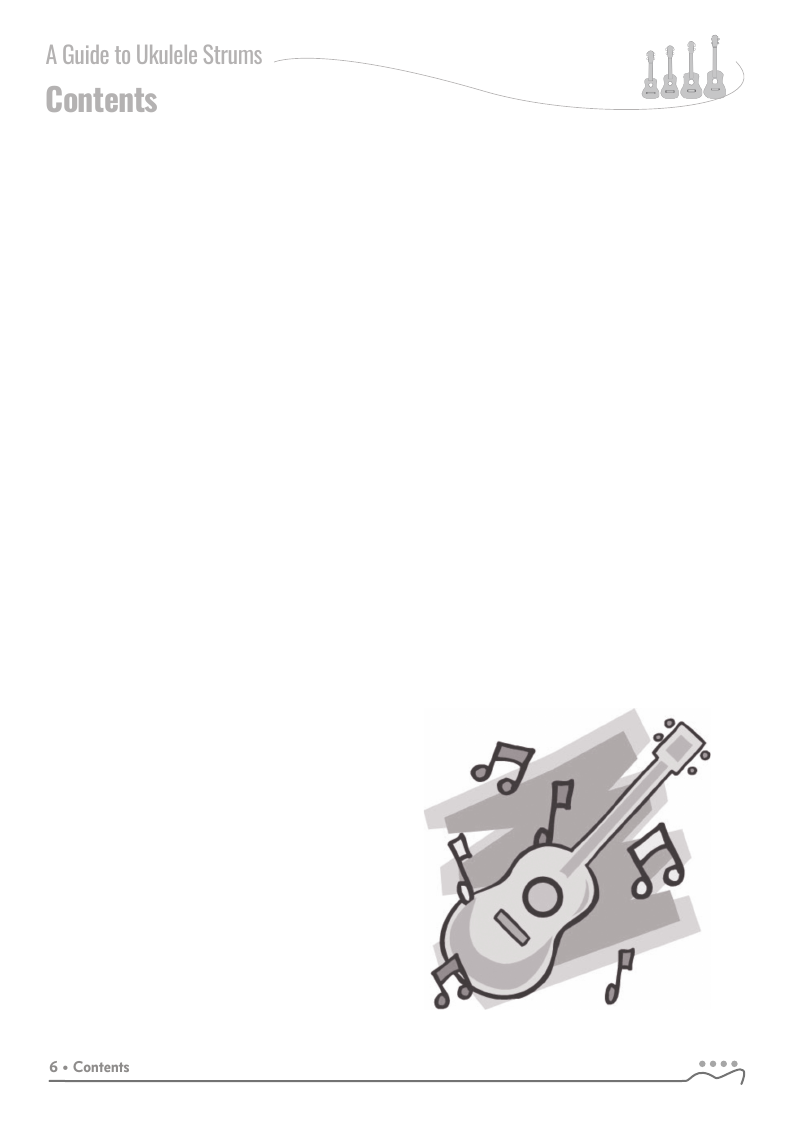
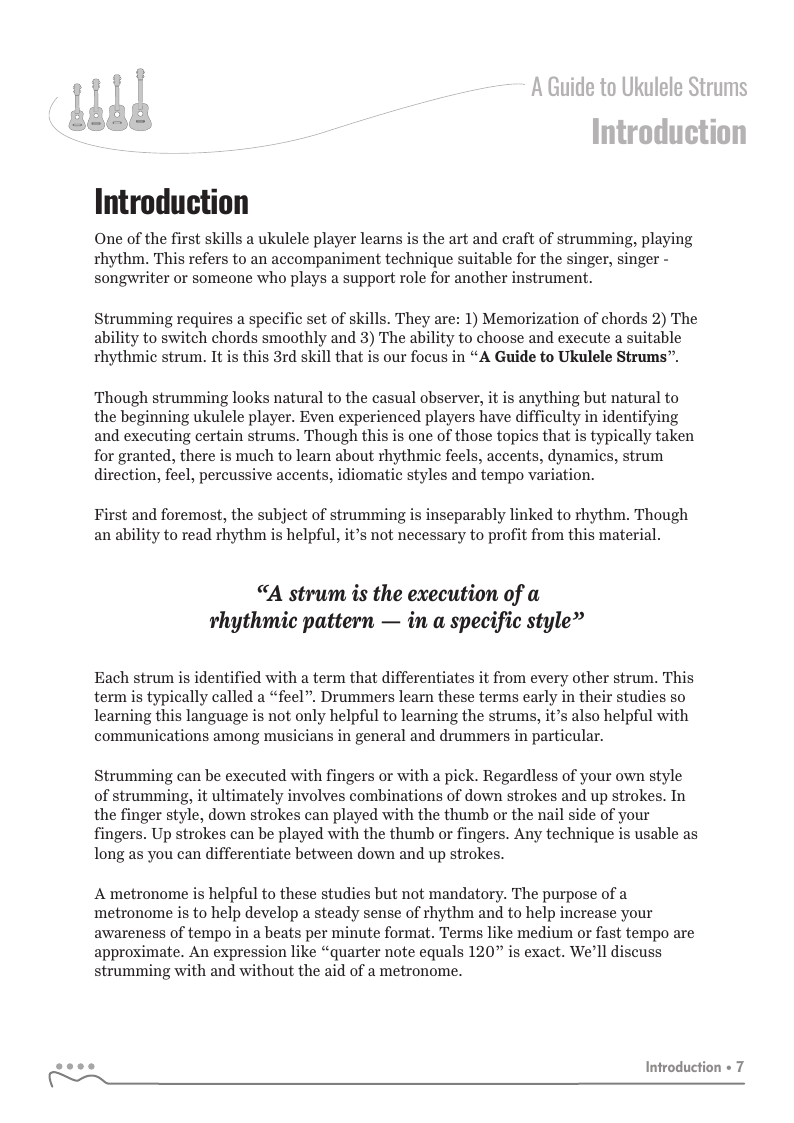
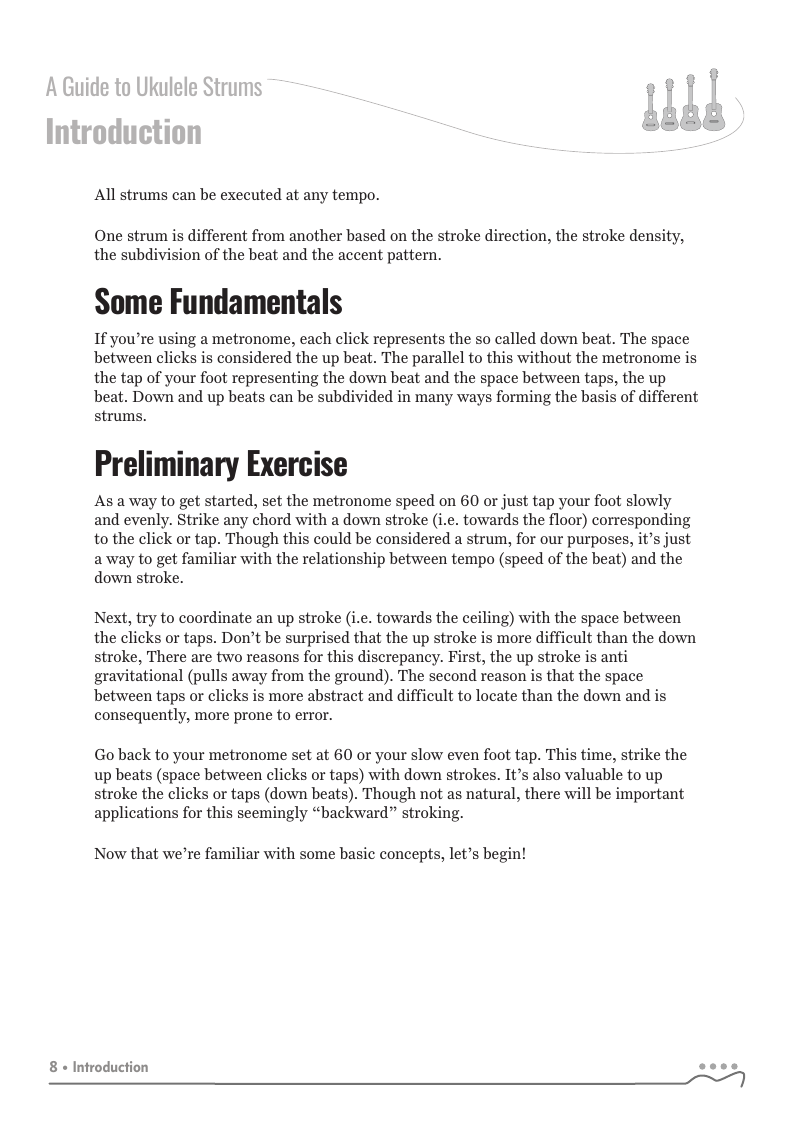
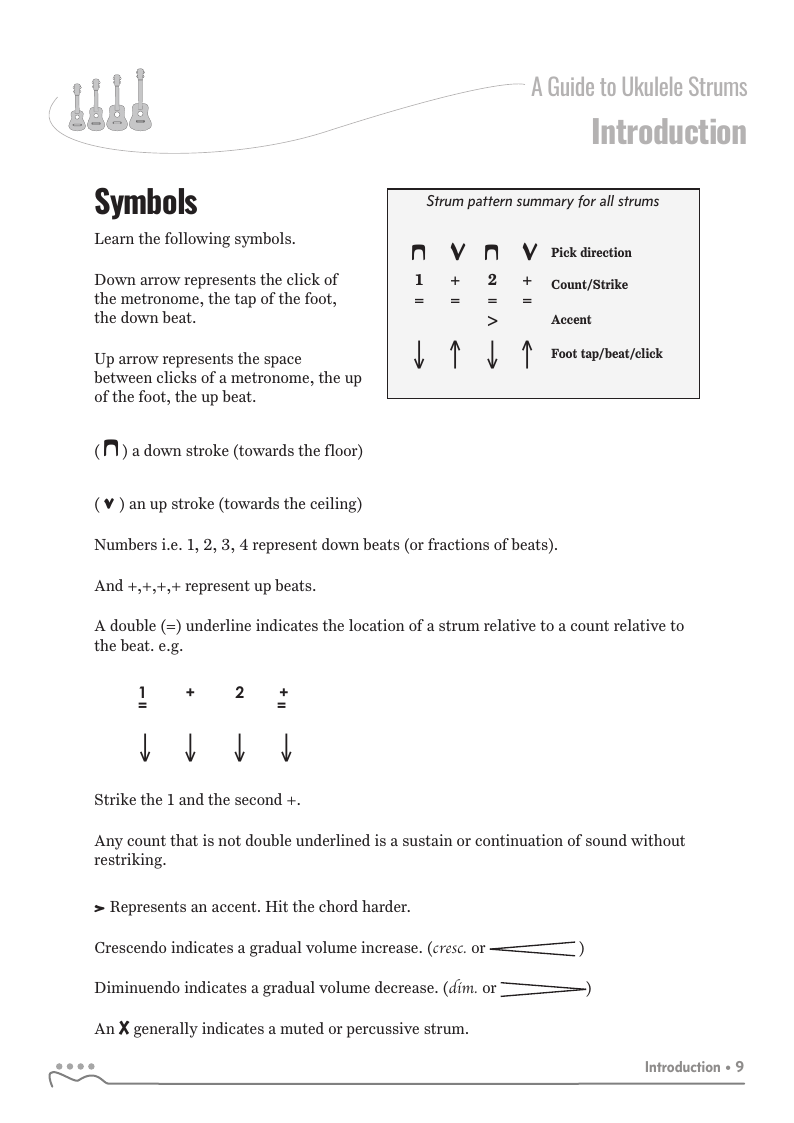
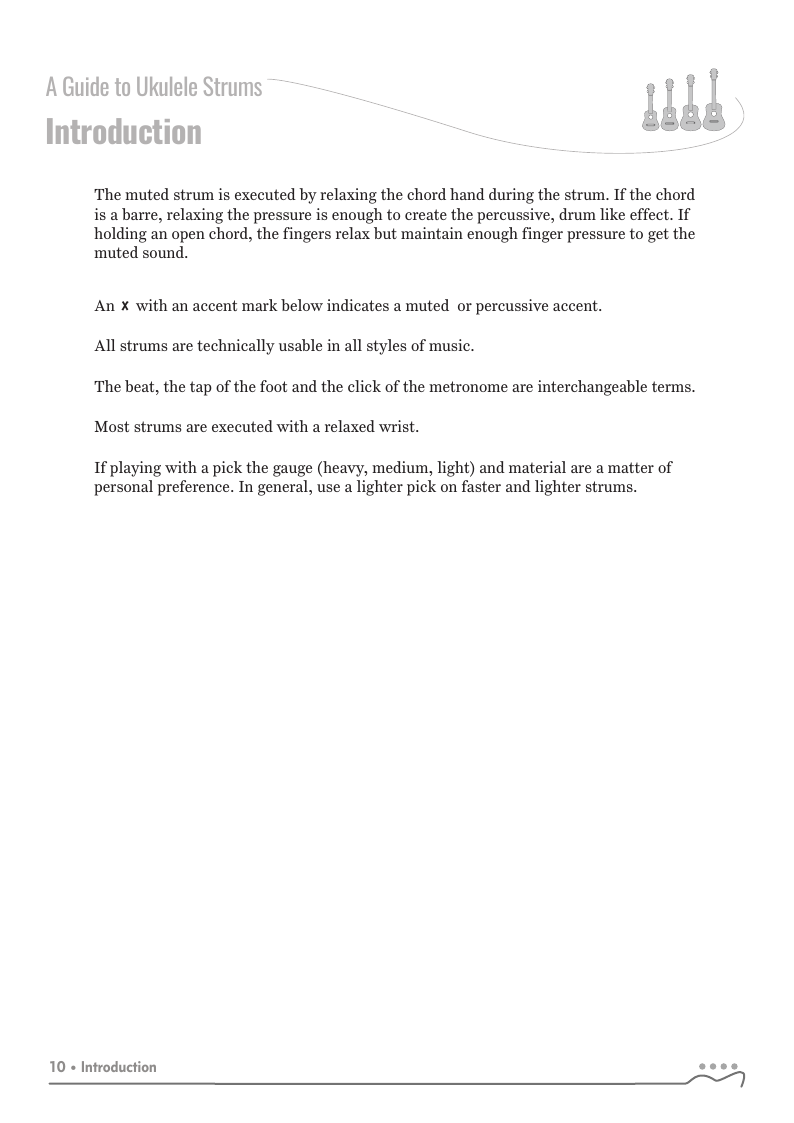
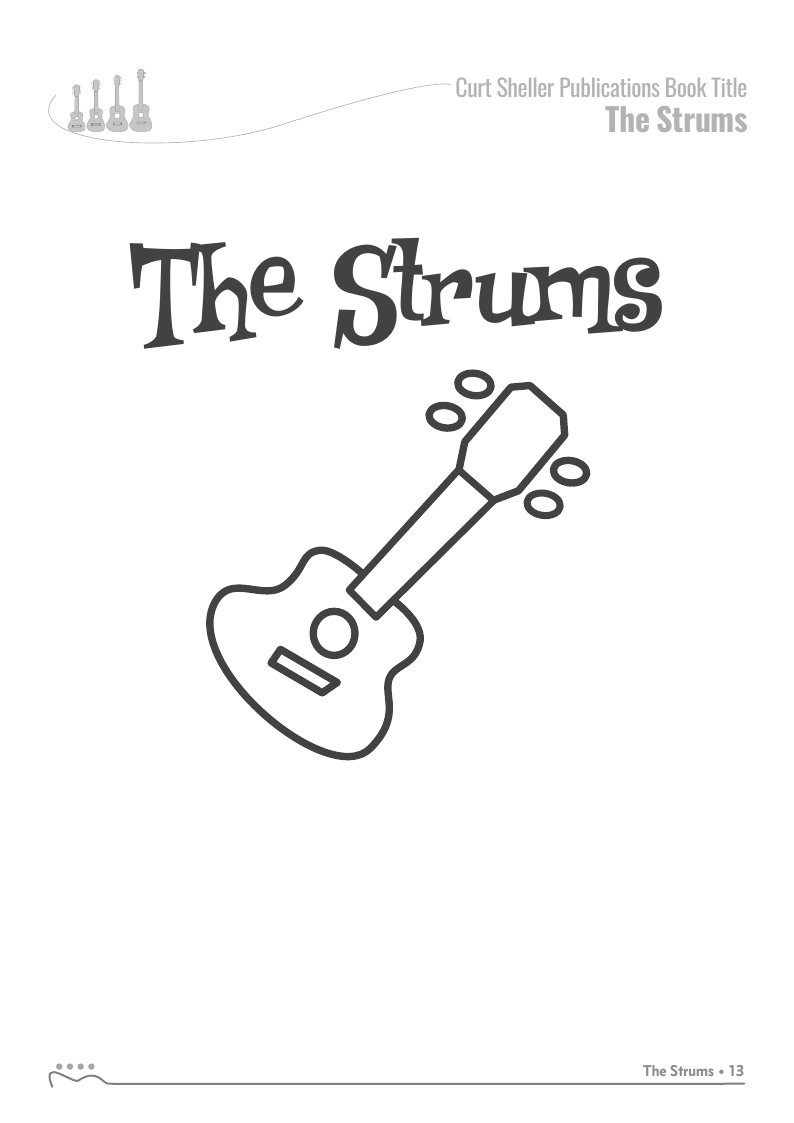
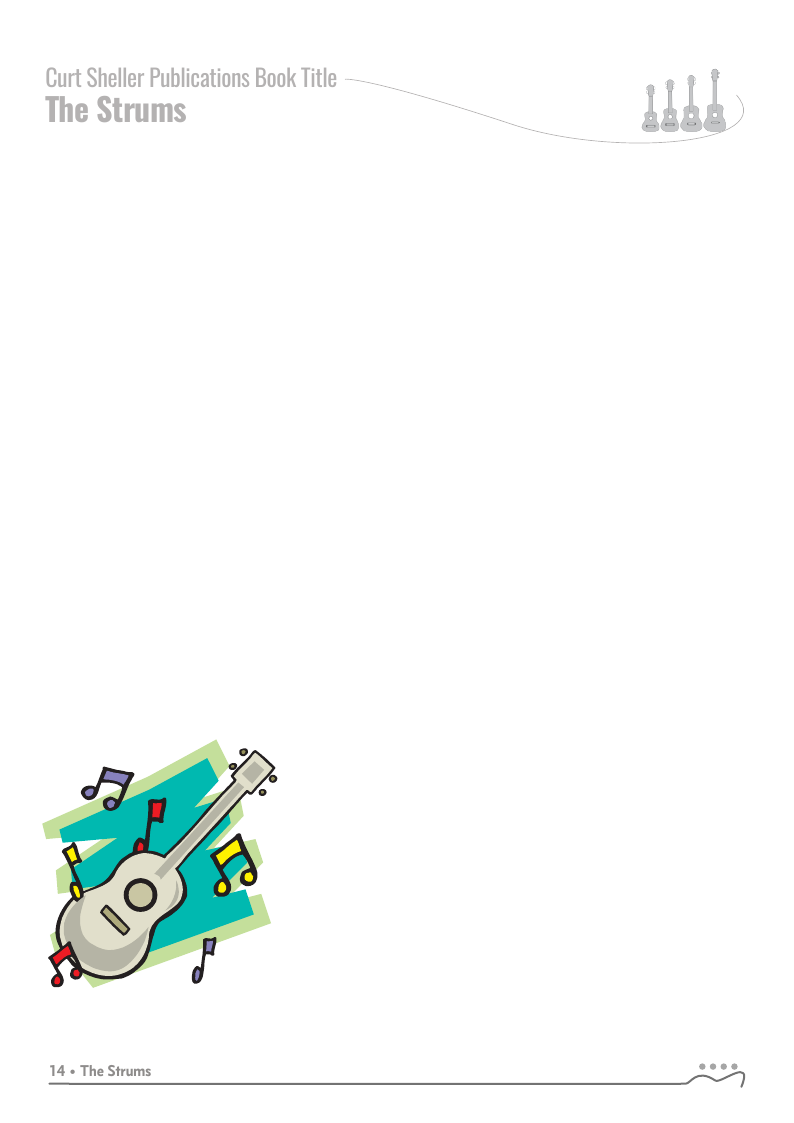
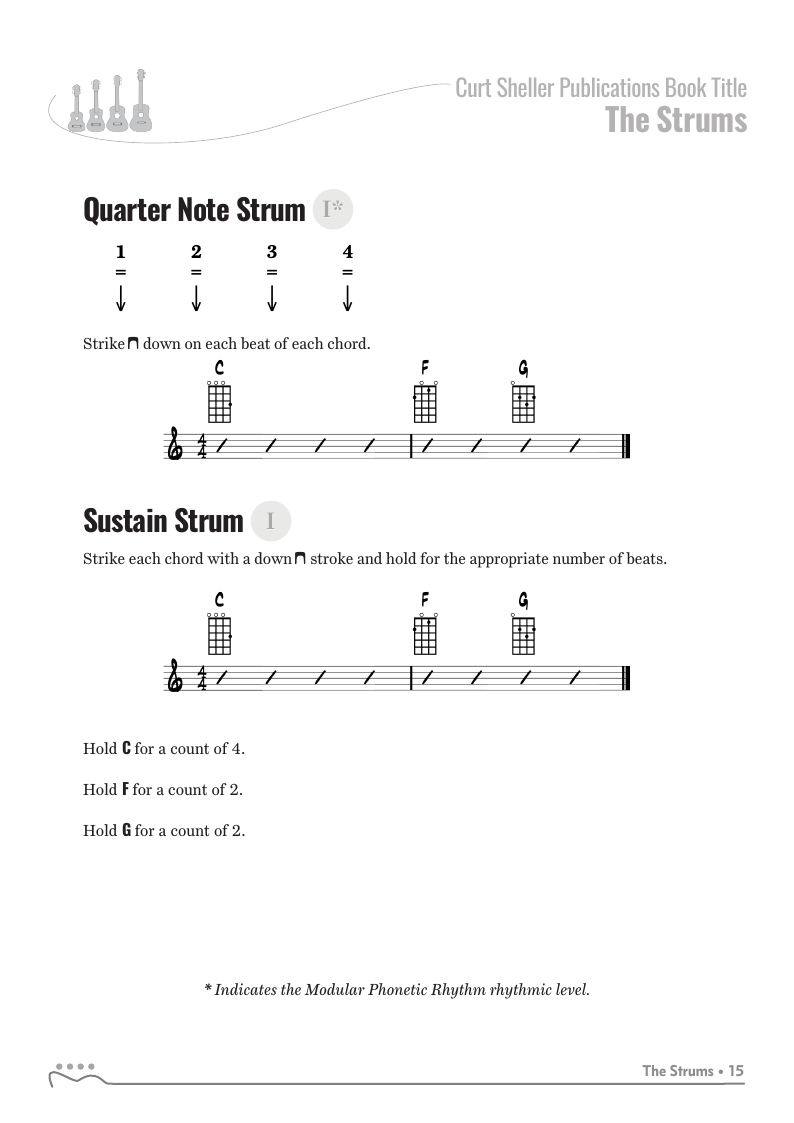
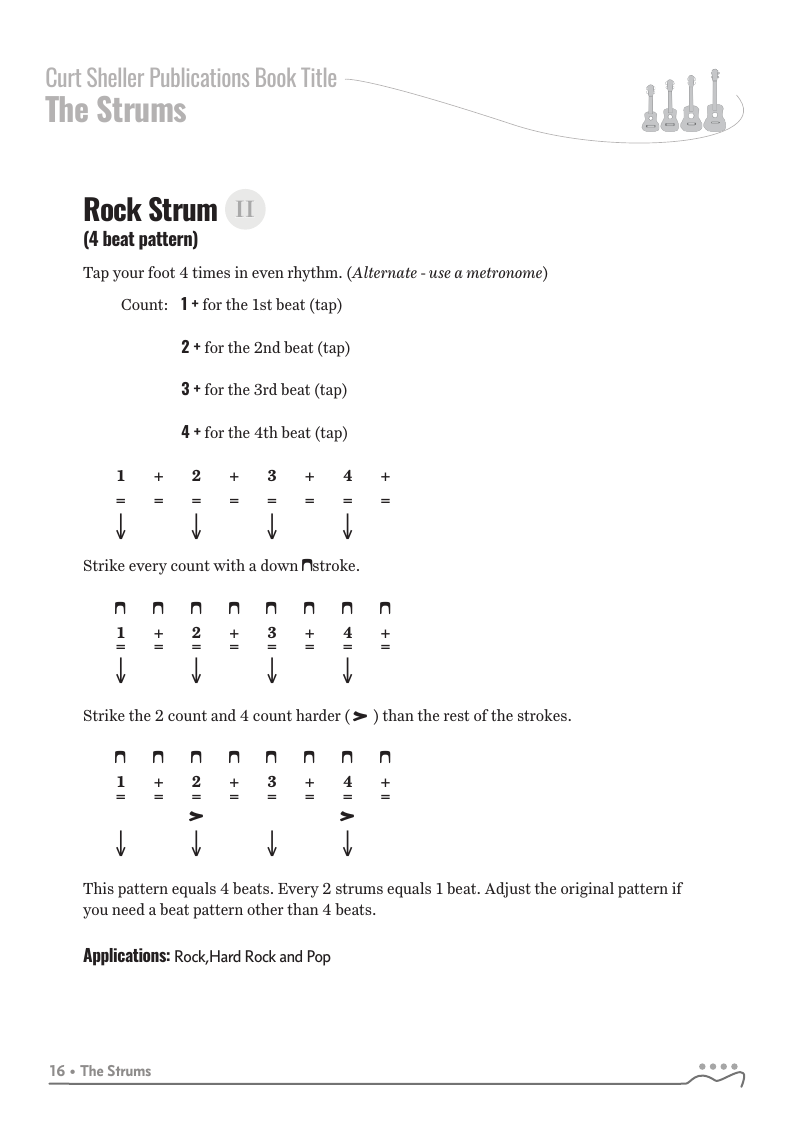
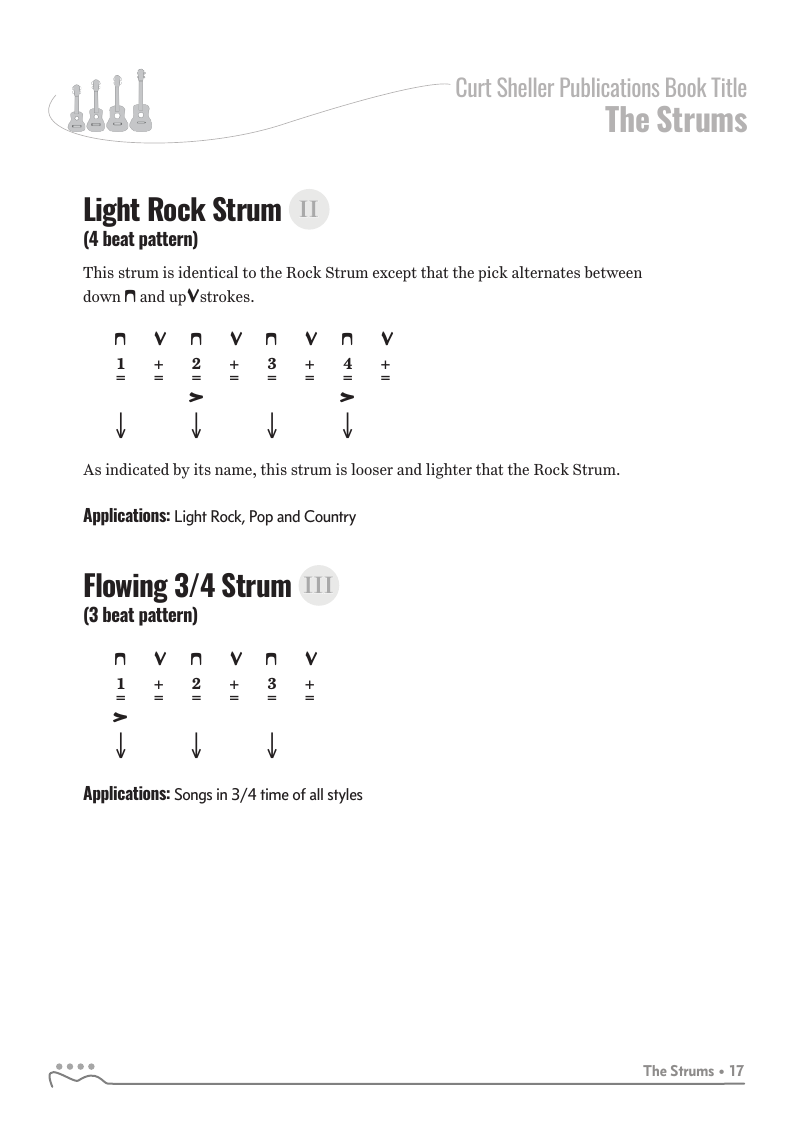
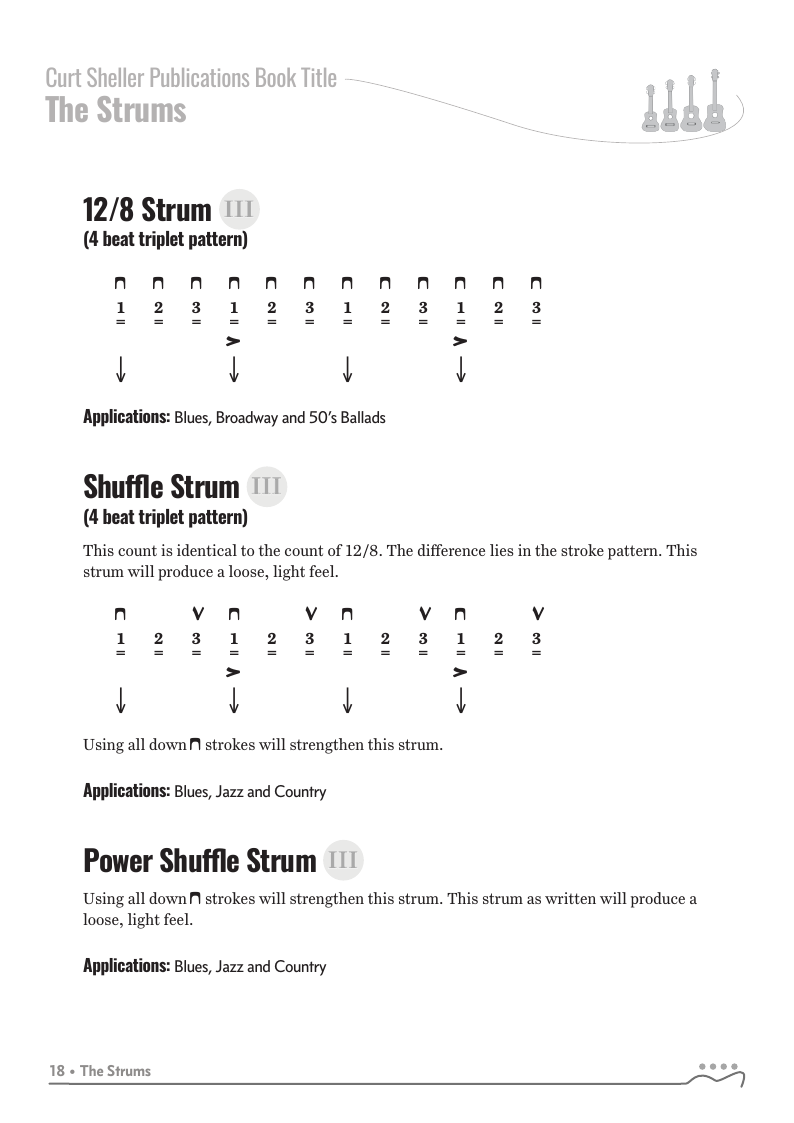
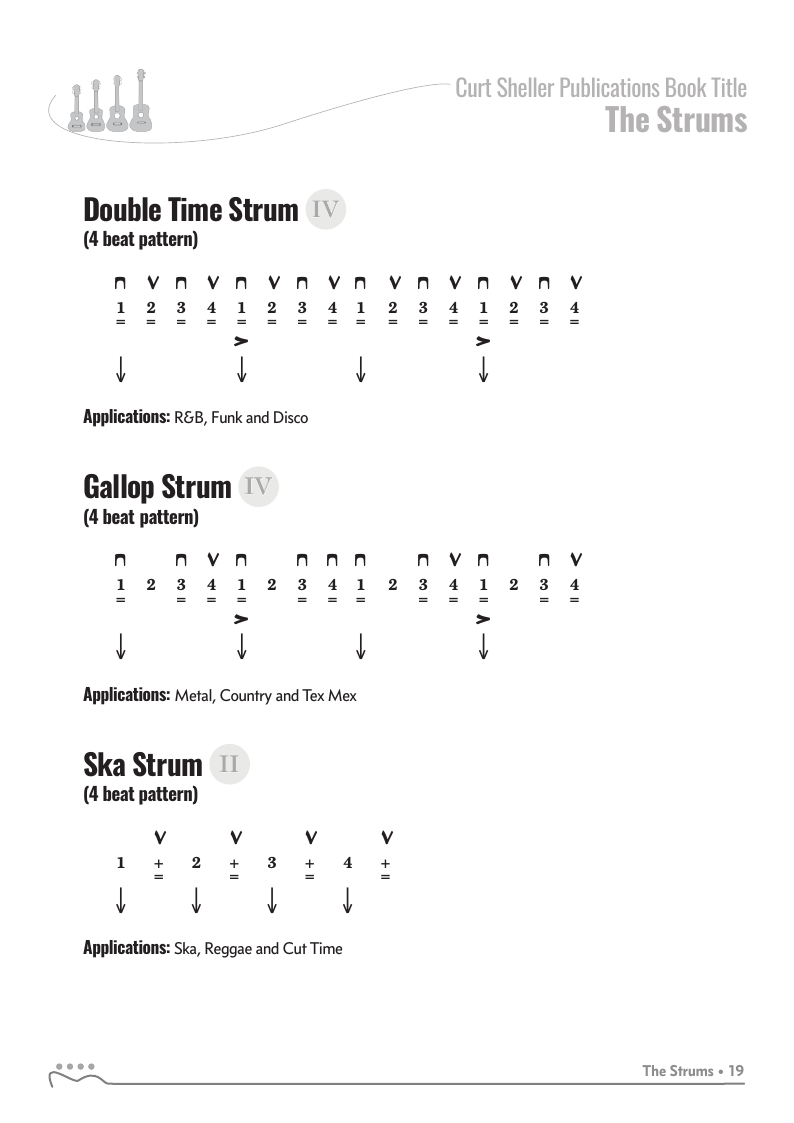
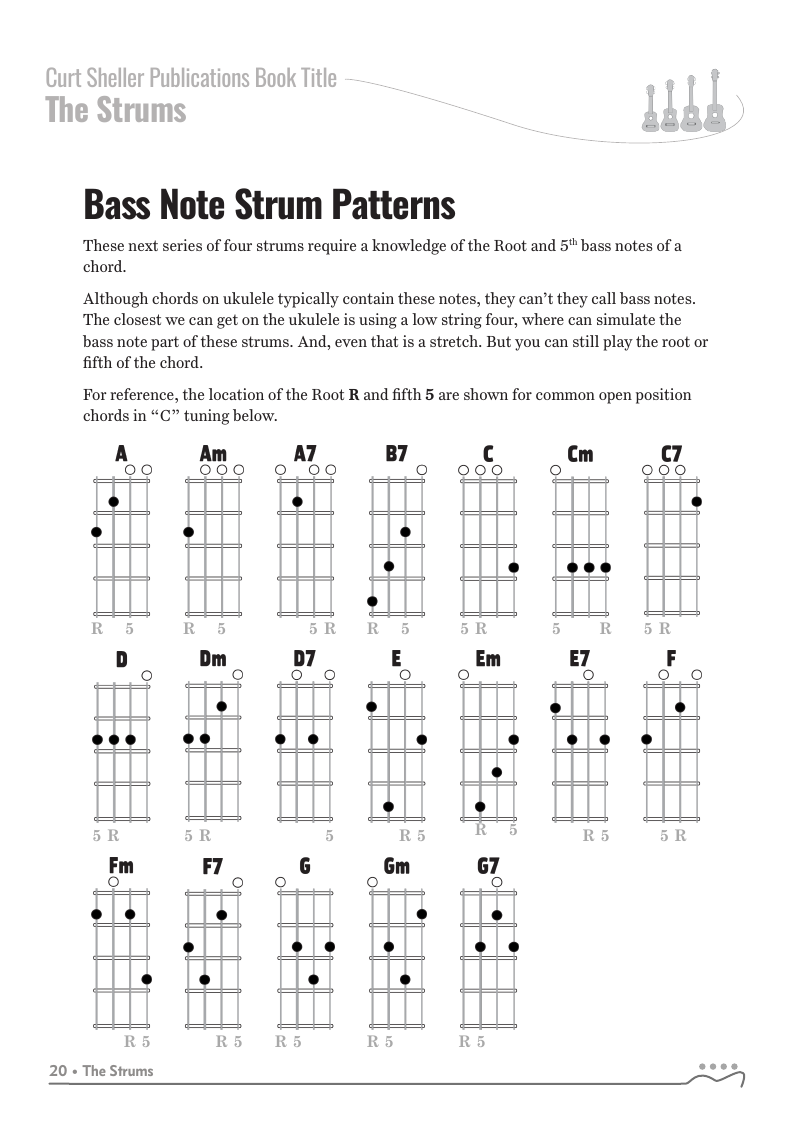
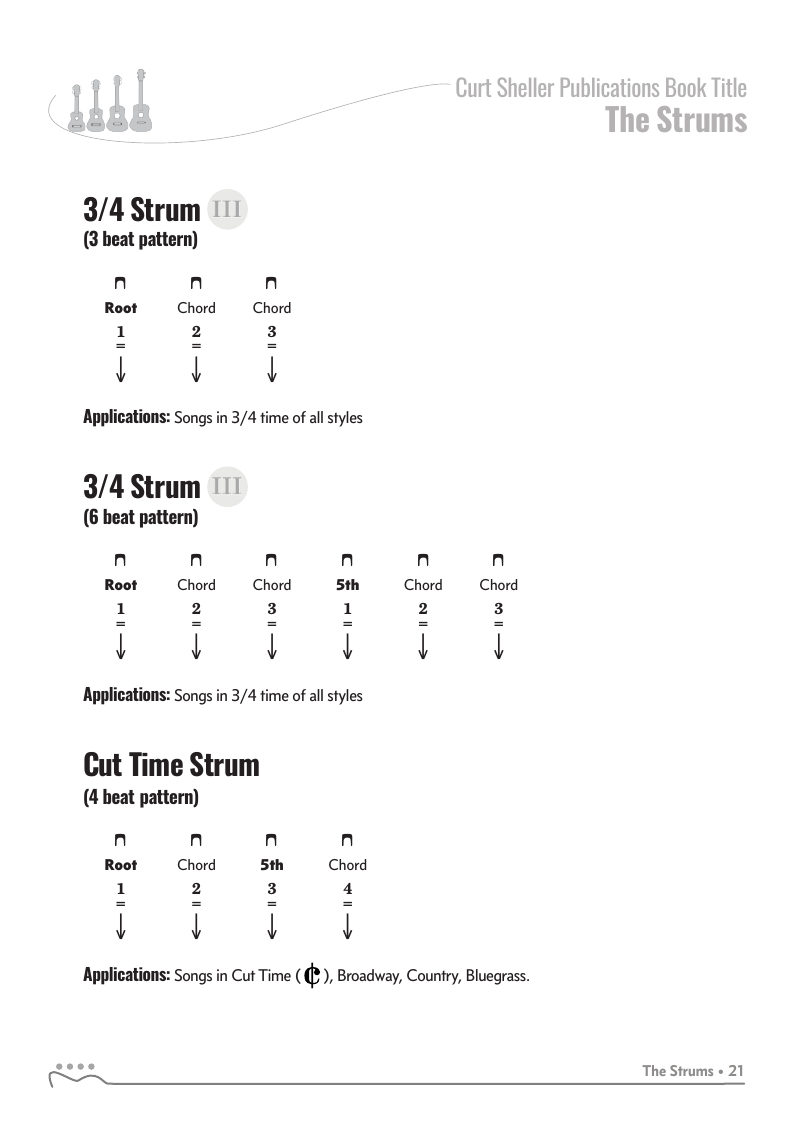
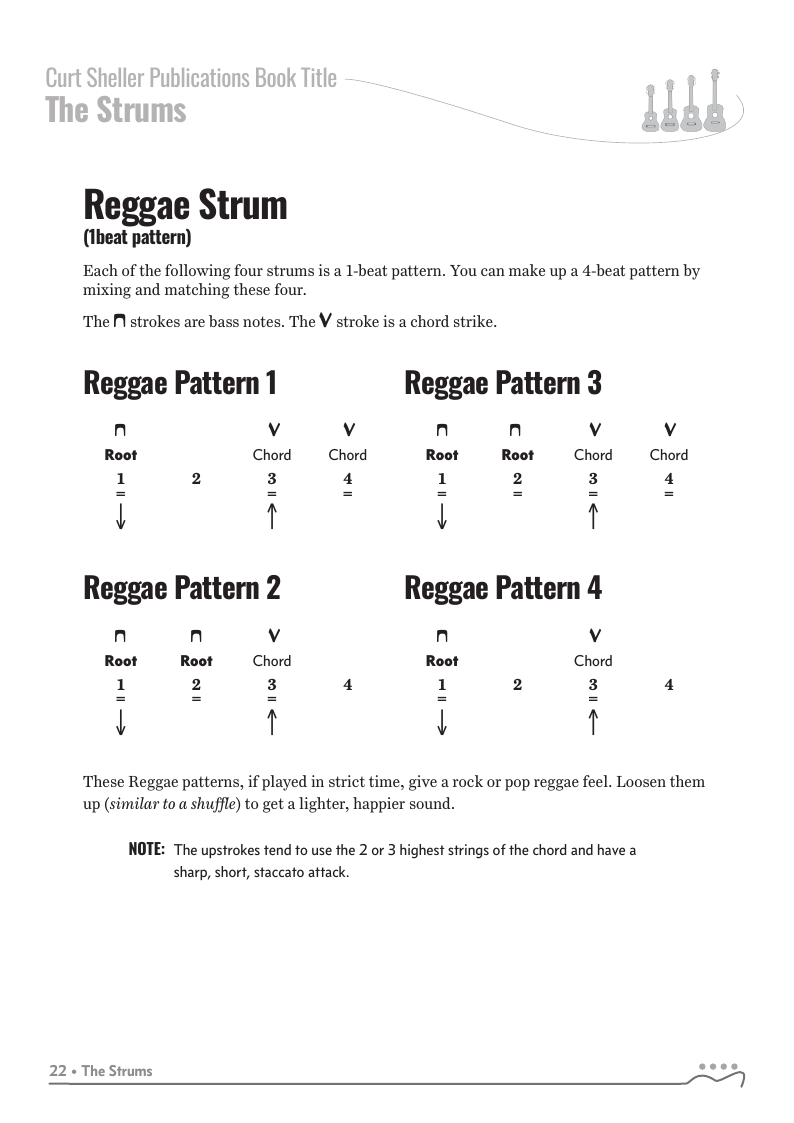
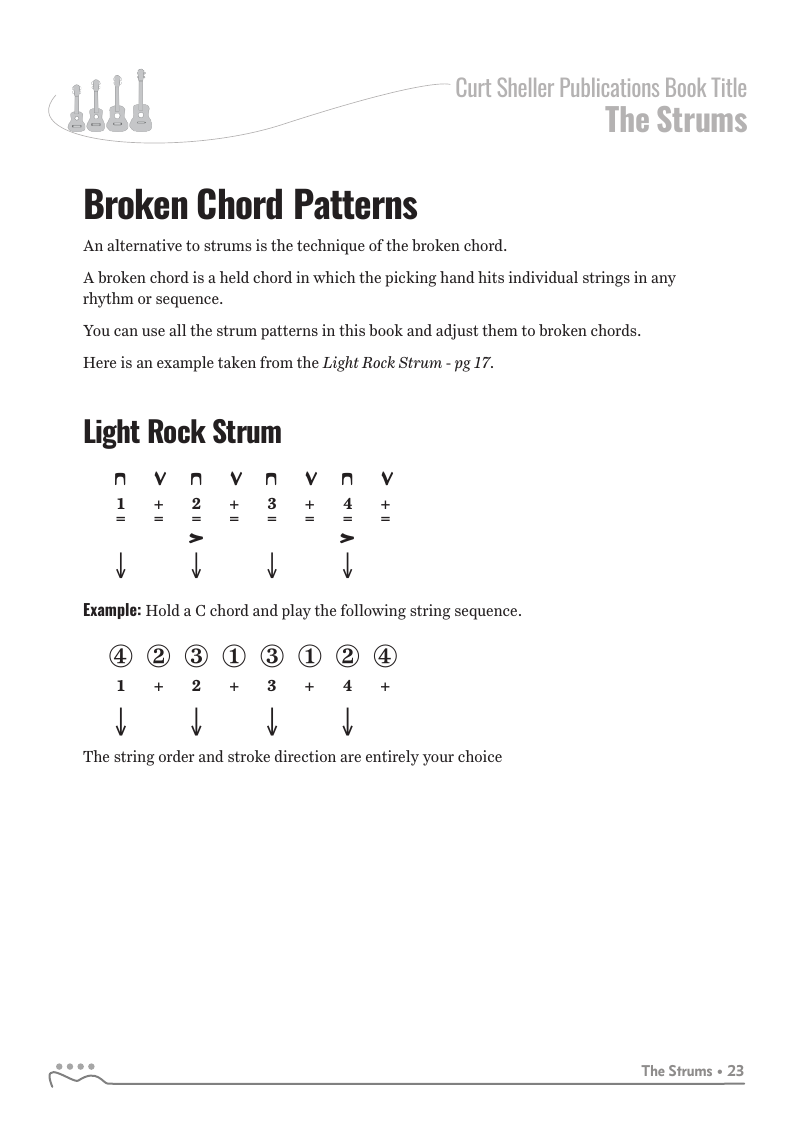
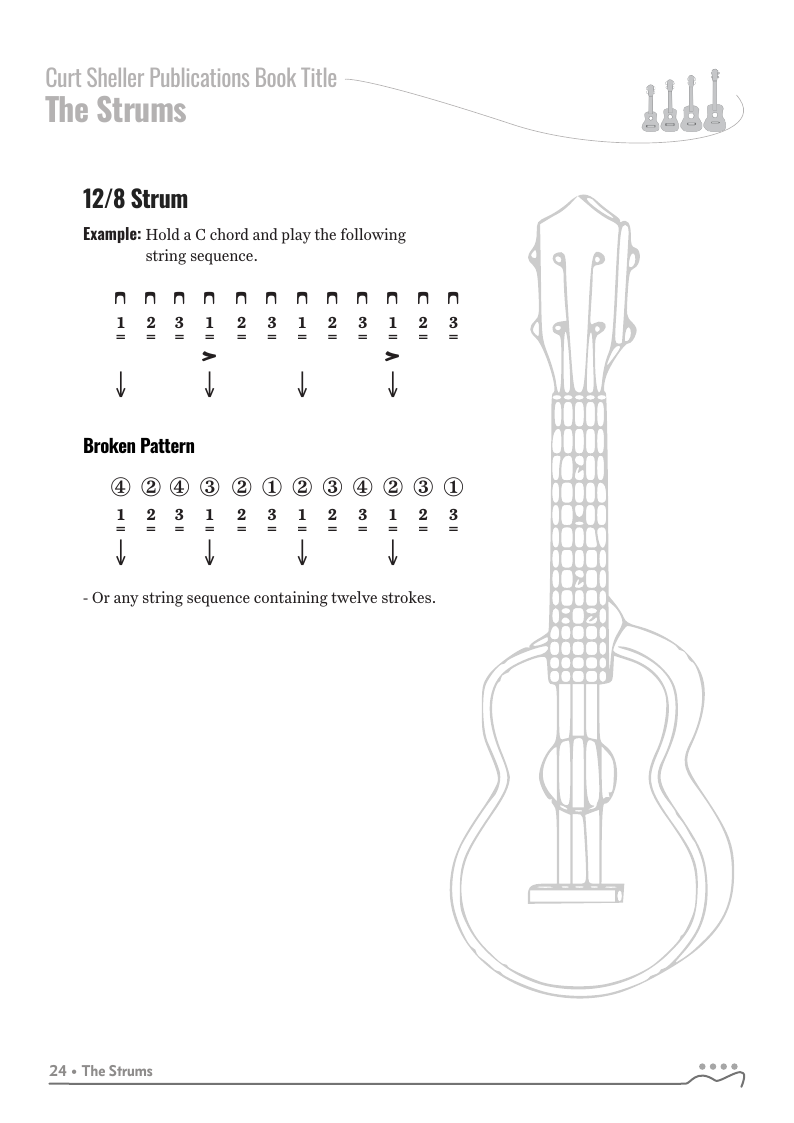
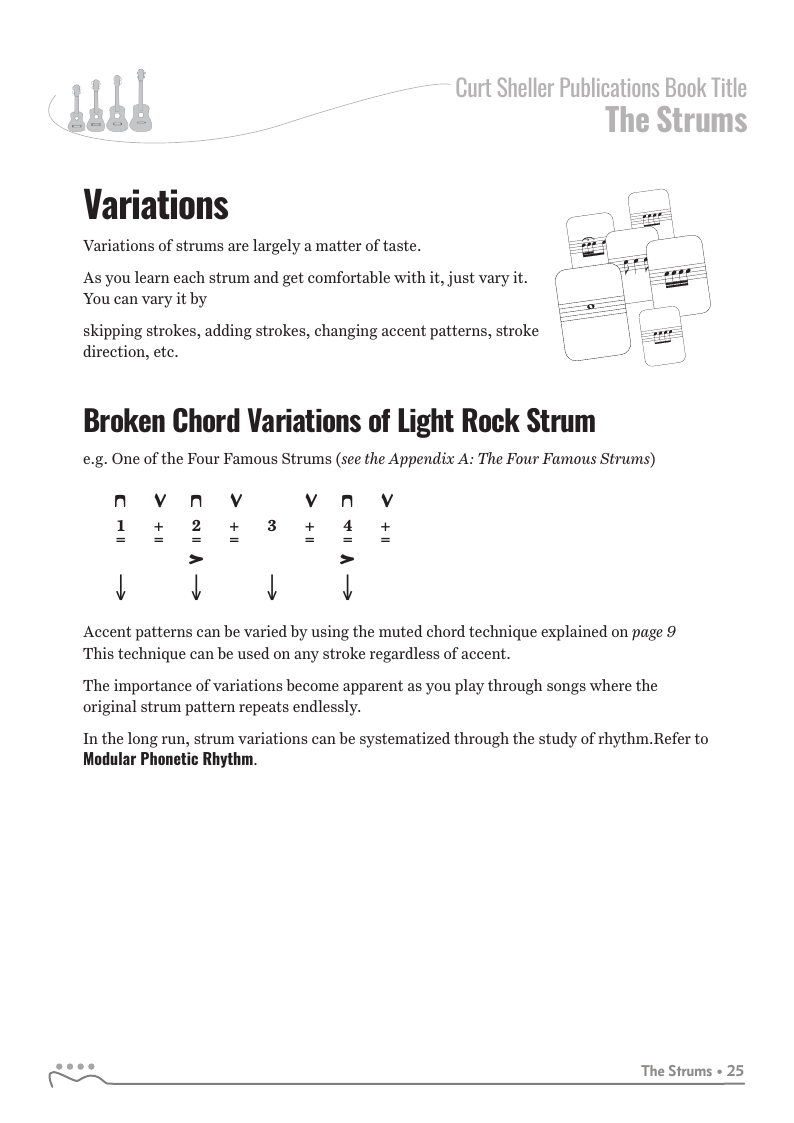
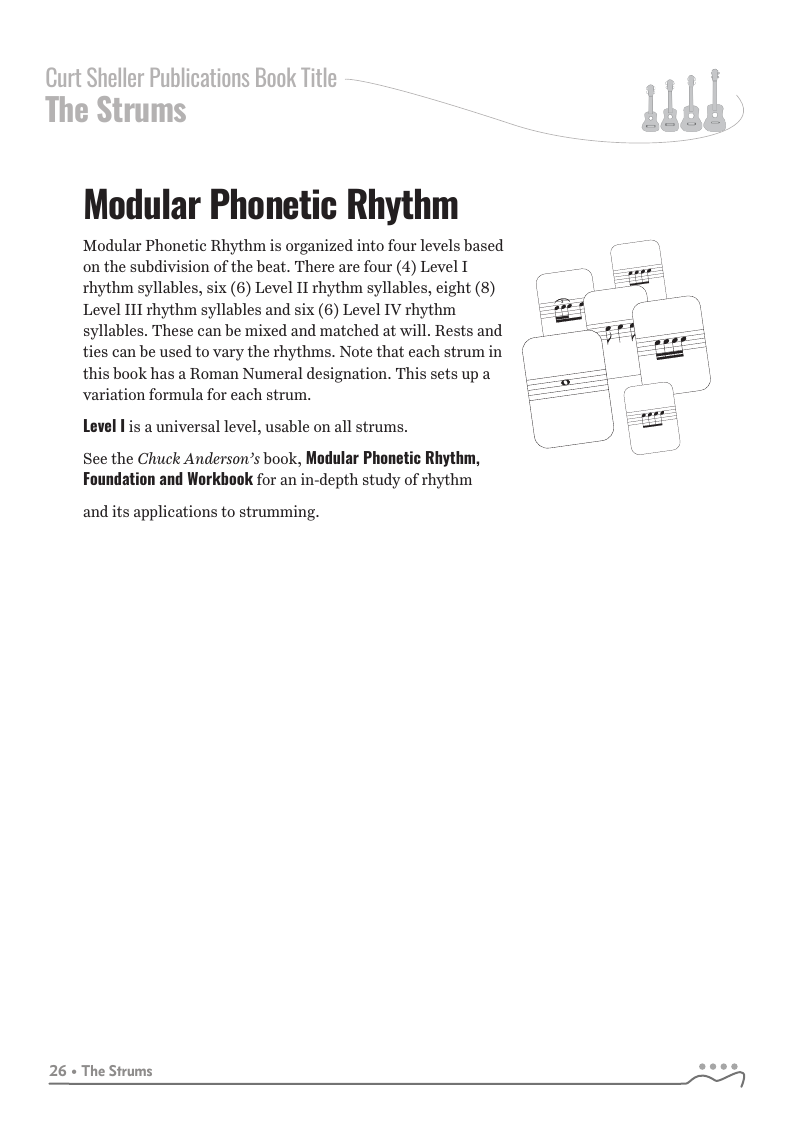
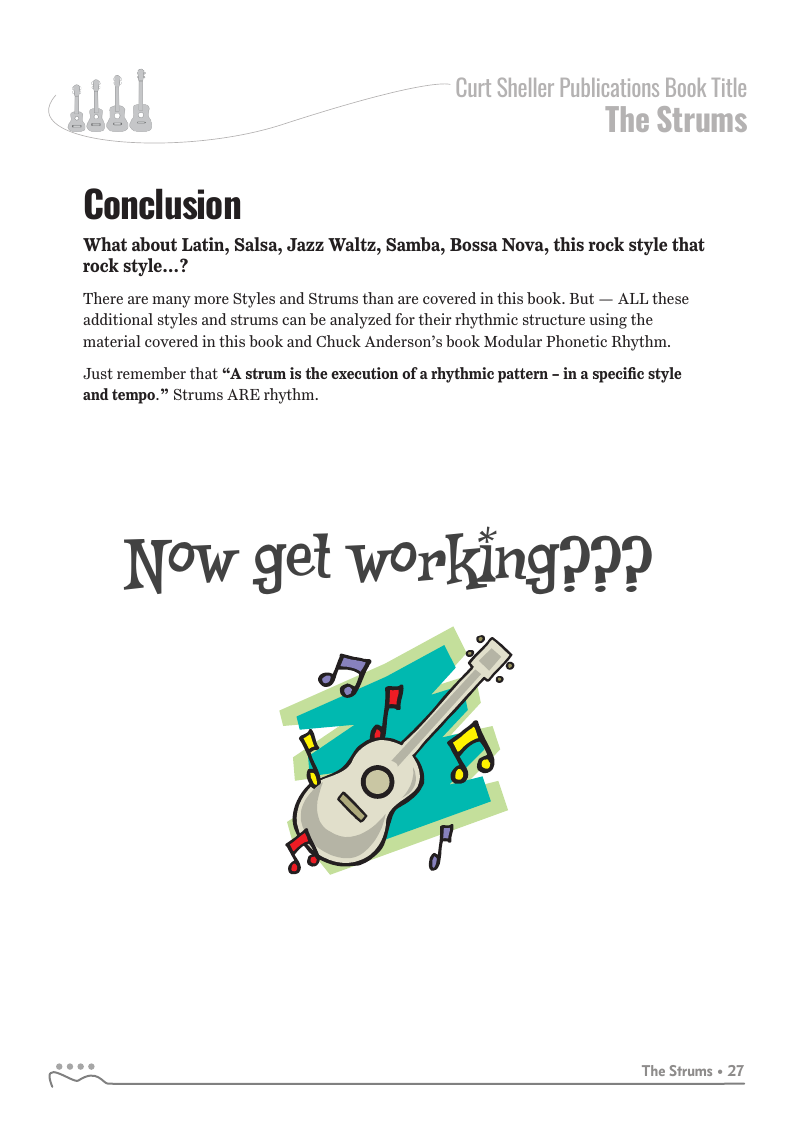
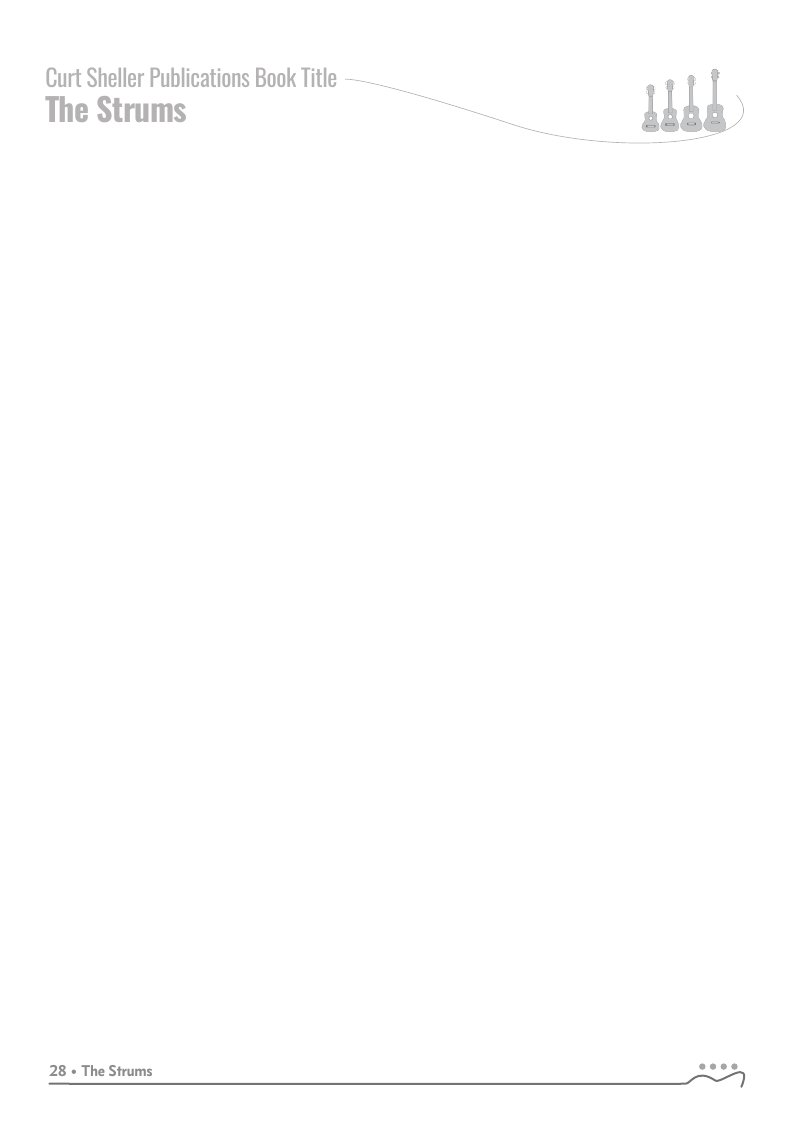
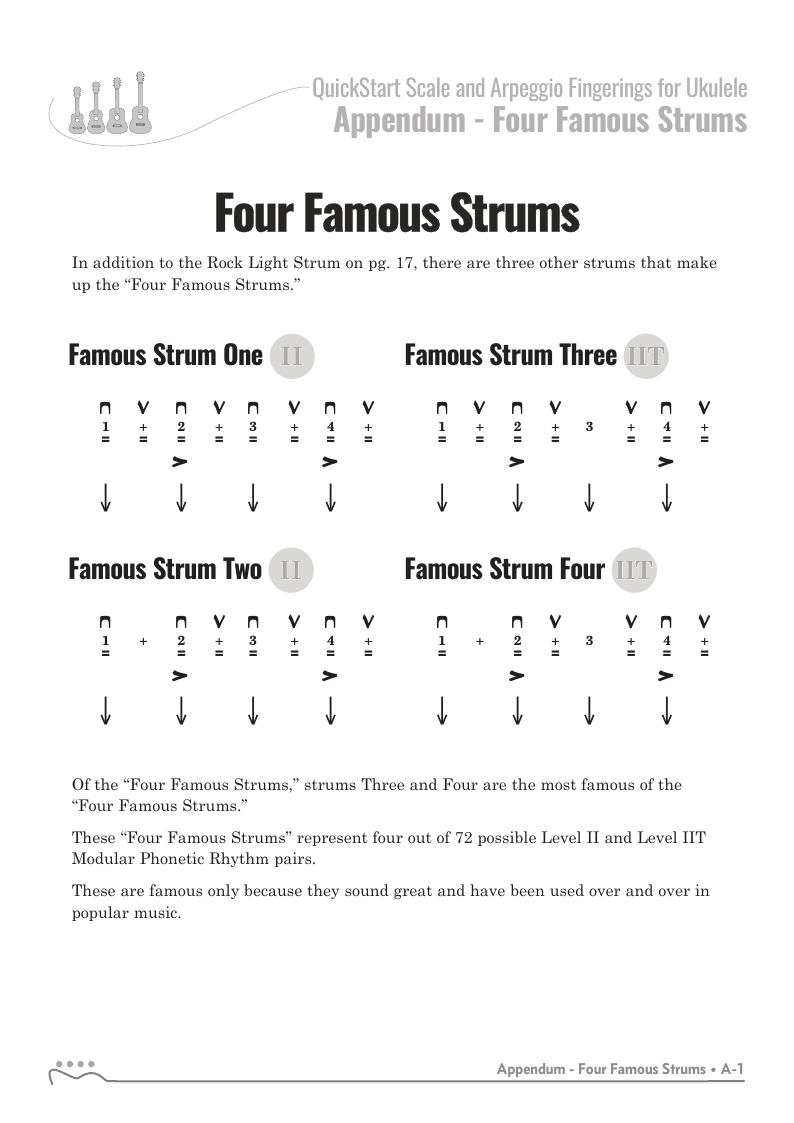
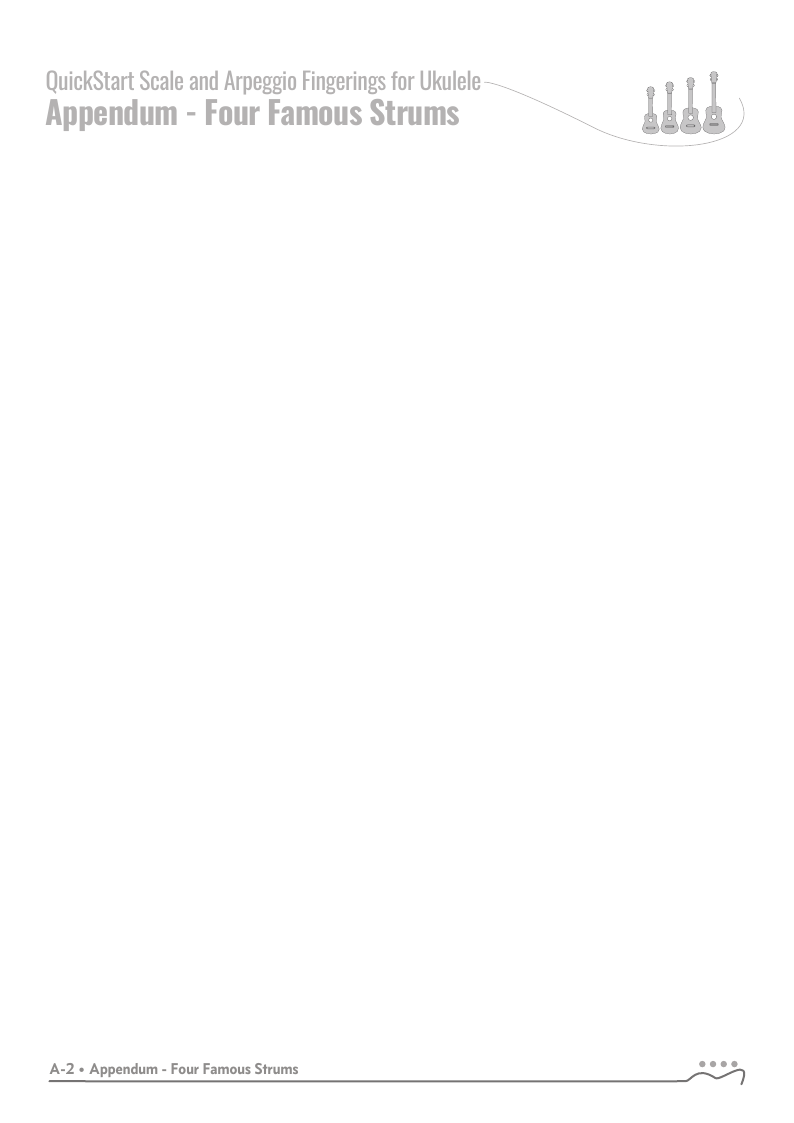
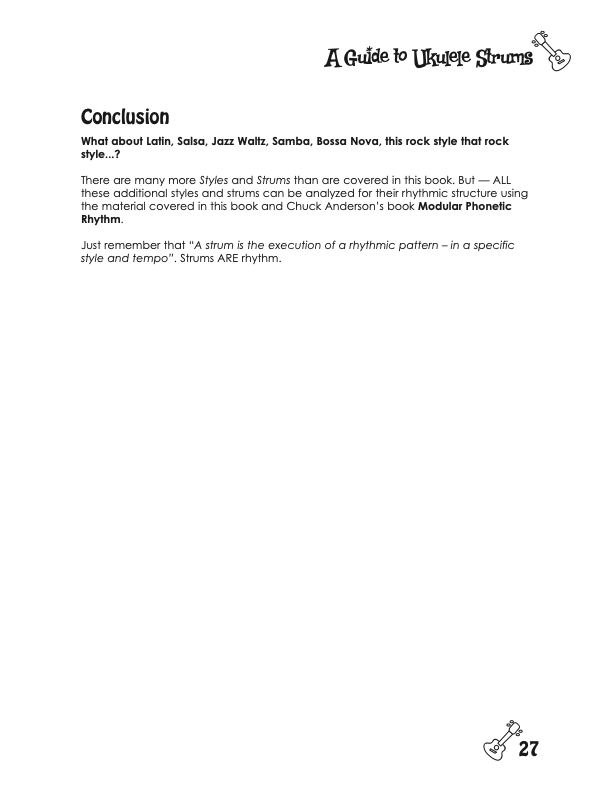
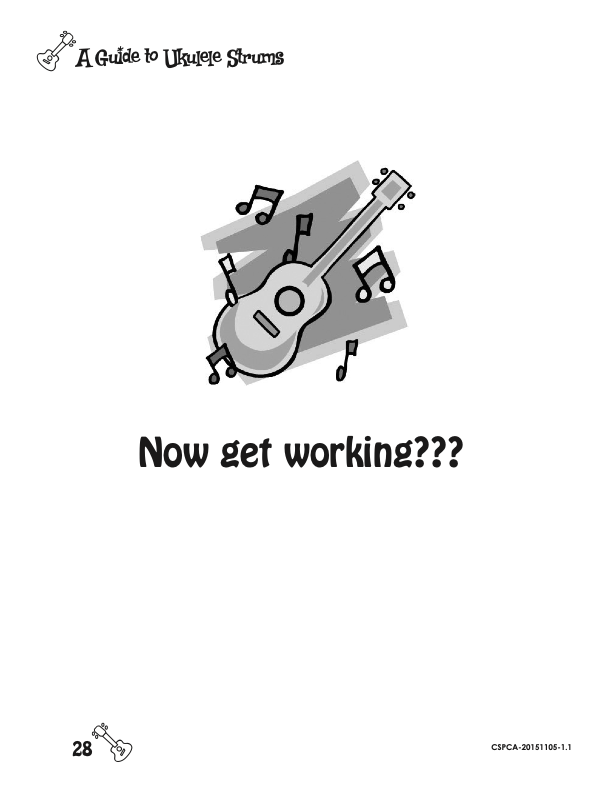




























Author(s): Curt Sheller
Publisher(s): Curt Sheller Publications
Published: Jul 12, 2008
Updated: Sep 29, 2025
ISBN-13: 78-1-60321-019-5
Size*: Book ANSI A (8.5 x 11 in), PDF A4 (210 x 297 mm)
Pages: 26
Hard Copy Price: $15.95
PDF Price: $7

• click to Hide more info • click to Show more info
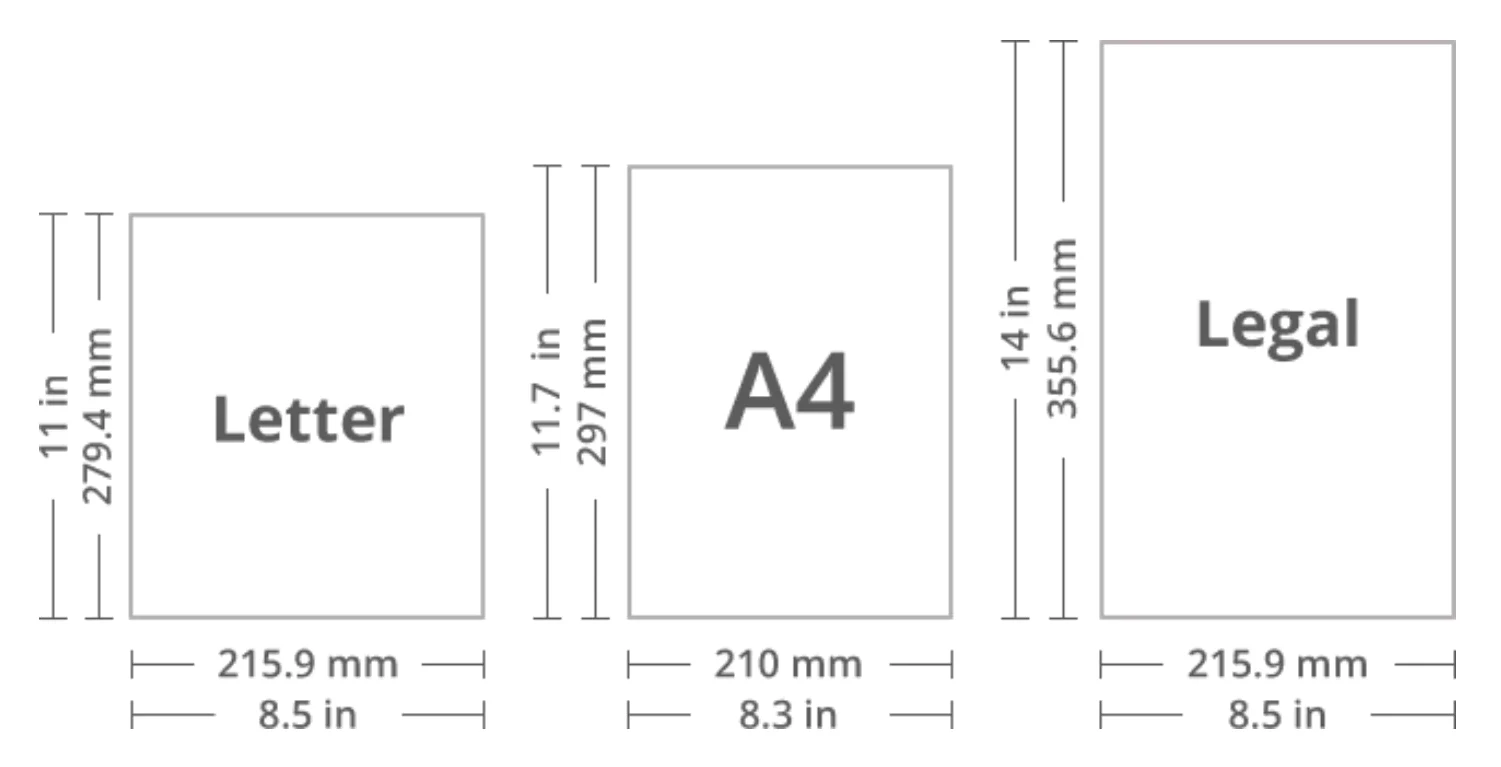
- A4 (210 x 297 mm / 8.3 x 11.7 in)
- ANSI A (US Letter): (8.5 x 11 in / 216 x 279 mm)
- Legal US Legal: (8.5 x 14 in / 216 x 356 mm) shown for reference
Scale to Fitand the A4 size will print out fine.
Learn a variety of strums and rhythmic patterns in wide range of musical styles.
One of the first skills a ukulele player learns is the art and craft of strumming, playing rhythm. This refers to an accompaniment technique suitable for the singer, singer - songwriter or someone who plays a support role for another instrument.
Strumming requires a specific set of skills:
- Memorization of chords
- The ability to switch chords smoothly
- The ability to choose and execute a suitable rhythmic strum
It's this 3rd skill that is our focus in A Guide to Ukulele Strums and Rhythmic Patterns.
Though strumming looks natural to the casual observer, it is anything but natural to the beginning ukulele player. Even experienced players have difficulty in identifying and executing certain strums. Though this is one of those topics that is typically taken for granted, there is much to learn about rhythmic feels, accents, dynamics, strum direction, feel, percussive accents, idiomatic styles and tempo variation.
First and foremost, the subject of strumming is inseparably linked to rhythm. Though an ability to read rhythm is helpful, it's not necessary to profit from this material.
Each strum is identified with a term that differentiates it from every other strum. This term is typically called a feel. Drummers learn these terms early in their studies so learning this language is not only helpful to learning the strums, it's also helpful with communications among musicians in general and drummers in particular.
The strums in this book work in any tuning or instrument. Chord examples shown for ukuleles in C tuning.
One strum is different from another based on the stroke direction, the stroke density, the subdivision of the beat and the accent pattern.
Strums covered include: Quarter Note, Sustain, Rock, Light Rock, 12/8, Shuffle, Power Shuffle, Double Time, Gallop, Flowing 3/4, Ska, Bass Note Patterns, 3/4, Reggae and Broken Patterns.
- Introduction
- Some Fundamentals
- Preliminary Exercises
- Symbols
- Quarter Note Strum
- Sustain Strum
- Rock Strum
- Light Rock Strum
- 12/8 Strum
- Shuffle Strum
- Power Shuffle Strum
- Double Time Strum
- Gallop Strum
- Flowing 3/4 Strum
- Ska Strum
- Bass Note Strum Patterns
- 3/4 Strum
- Reggae Strum
- Broken Patterns
- Variations
- Modular Phonetic Rhythm
- Conclusion
- Appendix 1: Four Famous Strums
- 2025-09-25 1856 – UPDATED
Page numbers in the Table of Contents (TOC) was off.

Modular Phonetic Rhythm represents a significant advance in the teaching and application of rhythm. Eliminating many inefficient aspects of rhythm education, Modular Phonetic Rhythm streamlines the traditional educational approach, resulting in a reflexive reaction to rhythm.
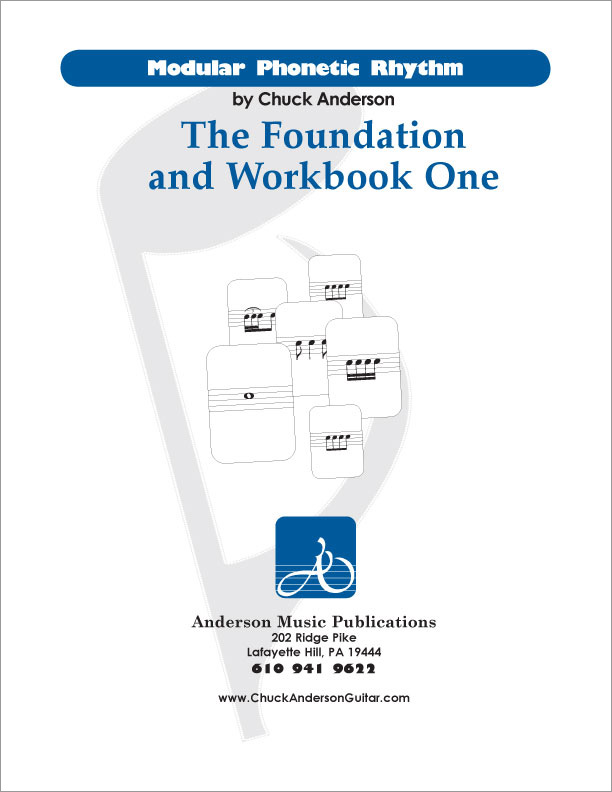
Modular Phonetic Rhythm represents a significant advance in the teaching and application of rhythm. Eliminating many inefficient aspects of rhythm education, Modular Phonetic Rhythm streamlines the traditional educational approach, resulting in a reflexive reaction to rhythm.

Finally, learn the names of the notes of the ukulele fingerboard in C tuning .

Learn the six fingering principles to navigating the ukulele fingerboard. Fingering is one of the most universal topics. Book: Six Secrets of the Ukulele Fingering

Harmonic Analysis is the understanding of the functional sequence of chords. It is the process used to analyze the harmonic structure of a progression, song or composition. Book: Harmonic Analysis for Scale Selection and Chord Substitution

Learn to read single note melodies in the first/open position is a lot easier than you might think. Book: Ukulele – Reading Music Series – Primer

An organized collection of daily practice and reference material for the contemporary ukulele player for developing the vocabulary and knowledge necessary for single note playing. Book: Daily Practice Material for the Contemporary Ukulele
Checkout the Books & Reference Charts for additional Handy, Dandy Reference Charts.

Ukulele Fingerboard Chart for C Tuning, Low or High G – G C E A

Ukulele Fingerboard Chart for G Tuning, Low or High A – D G B E

A handy reference chart of all 15 major and relative minor key signatures. US Letter 8.5 x 11 sized (ANSI-A), A4
Checkout the Books & Reference Charts for additional Handy, Dandy Reference Charts.



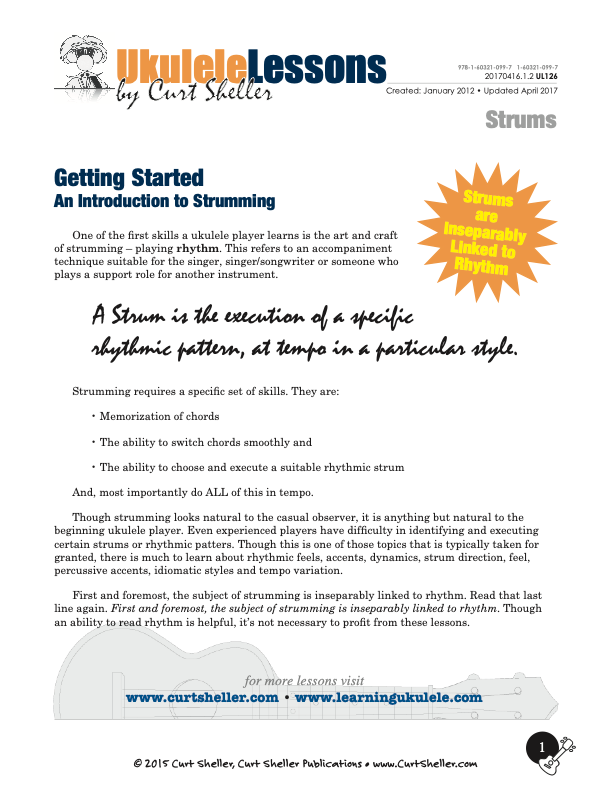




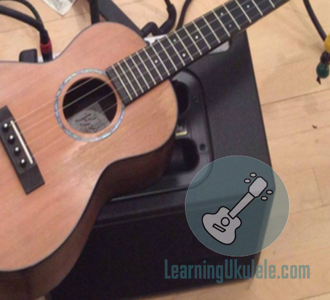
.jpg)